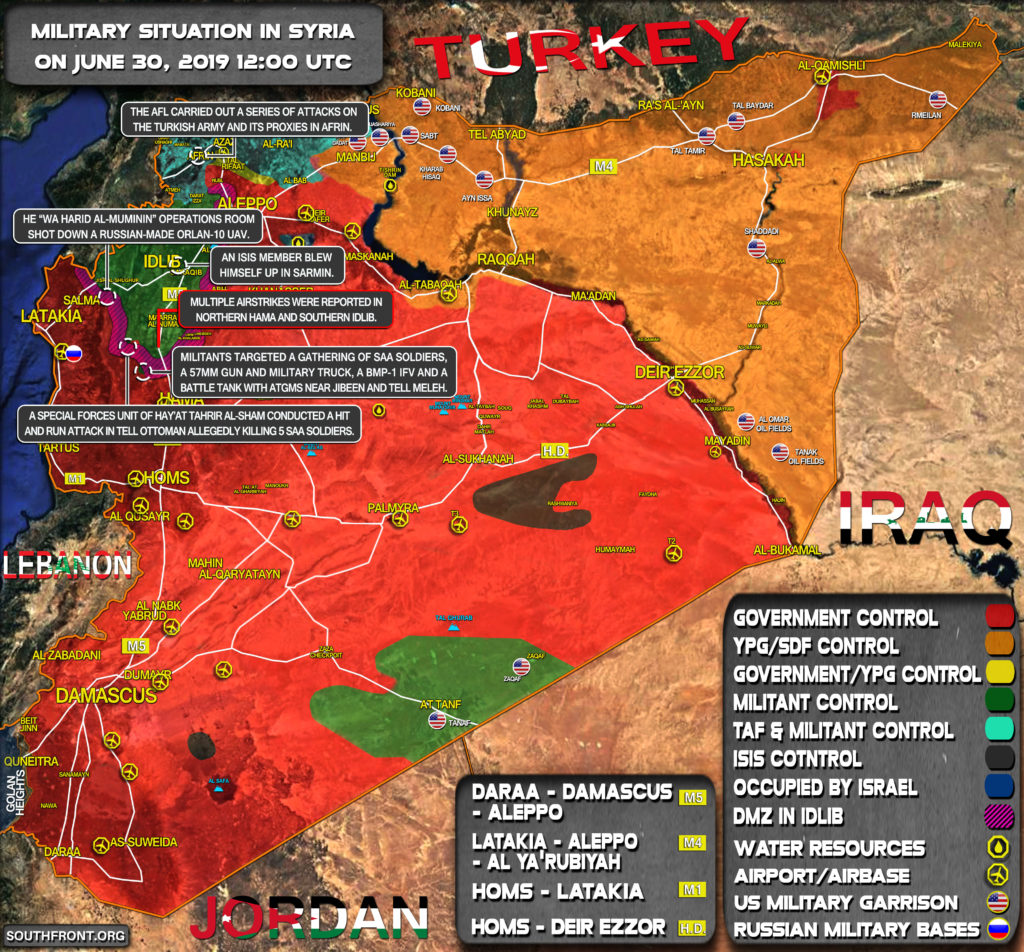By the middle of 2019, northwestern Syria had turned into the main hot point in the war-turn country. The Turkish Armed Forces (TAF) and pro-Turkish militant groups are still struggling to secure the area of Afrin captured from the People’s Protection Units [YPG; a Kurdish rebel group affilated with the Kurdistan Workers’ Party, which is considered a terrroist group in Turkey]. Since 2018, the YPG-affilated Afrin Liberation Forces have carried out dozens of attacks on positions and convoys of the TAF and its proxies.
At the same time, the situation is tense in the Idlib de-escalation zone. The demilitarization zone agreement and the ceasefire regime agreed by Turkey, Russia and Iran in the Astana format is in fact not working. Turkish-backed militant groups are not hurrying up to break ties with Hayat Tahrir al-Sham (formerly Jabhat al-Nusra, the Syrian branch of al-Qaeda) and other terrorists. Instead, they are actively cooperating in attempts to pressure the Syrian Arab Army (SAA) in northwestern Hama. This sets ground for constant clashes and tensions in the area.
A brief overview of the recen developments:
- A special forces unit of Hay’at Tahrir al-Sham conducted a hit and run attack in Tell Ottoman allegedly killing 5 SAA soldiers;
- The “Wa Harid al-Muminin” operations room shot down a Russian-made Orlan-10 UAV;
- Militants targeted a gathering of SAA soldiers, a 57mm gun and military truck, a BMP-1 IFV and a battle tank with ATGMs near Jibeen and Tell Meleh;
- The AFL carried out a series of attacks on the Turkish Army and its proxies in Afrin;
- An ISIS member blew himself up in Sarmin;
- Multiple airstrikes were reported in northern Hama and southern Idlib.






